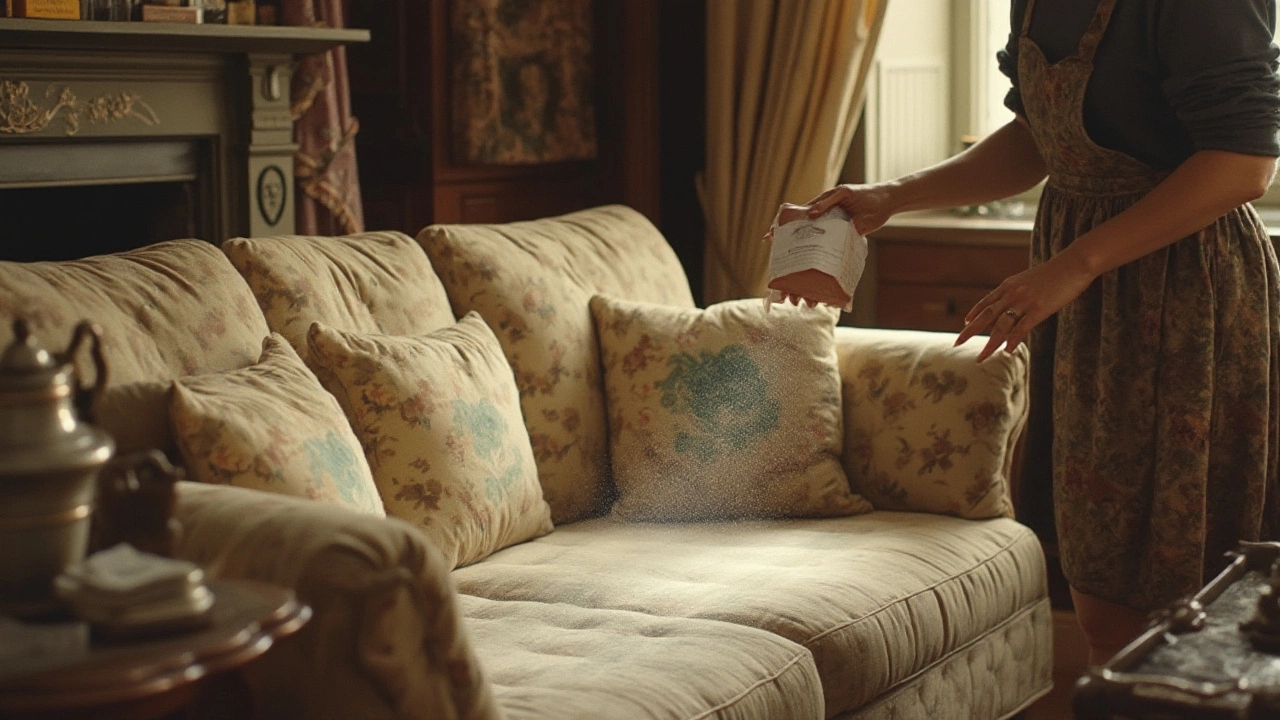Upholstery Tips for Keeping Your Sofas and Chairs Fresh
Got a couch that’s looking a bit tired? You don’t need a professional cleaner for every spill. With the right tools and a little know‑how, you can keep upholstery looking great day after day.
Everyday Upholstery Care
Start with a simple routine. Dust off the surface with a clean, dry microfiber cloth once a week. The cloth picks up dust, pet hair, and loose crumbs without scratching the fabric.
If you have a vacuum with an upholstery attachment, run it over the whole piece after dusting. Use the low‑suction setting and move the brush gently to pull dirt out of the fibers. This step alone cuts down on the need for deeper cleaning later.
Spot‑cleaning is your best friend. Keep a small spray bottle of warm water and a few drops of mild dish soap – Dawn works well – on hand. Lightly mist the stain, then blot with a clean white cloth. Never rub, because rubbing pushes the stain deeper.
Tackling Tough Stains
Some spills need a stronger approach. For grease or oil, sprinkle baking soda on the area right away. Let it sit for 10‑15 minutes to absorb the oil, then vacuum it up.
Wine, coffee, or juice stains respond to a vinegar solution. Mix one part white vinegar with two parts water, add a tiny splash of dish soap, and apply with a cloth. Blot gently until the spot fades.
Fabric couches often have removable cushion covers. Check the label – most are machine‑washable on a gentle cycle. Use cold water and a mild detergent, then tumble dry on low or air‑dry to avoid shrinking.
For deeper cleaning, a DIY foam cleaner works well. Combine equal parts water and white vinegar, add a teaspoon of baking soda, and shake until it foams. Apply the foam, let it sit for a few minutes, then scrub with a soft brush before wiping away with a damp cloth.
After any cleaning, let the upholstery air dry completely before using the furniture again. Opening windows or using a fan speeds up drying and prevents mildew.
Lastly, protect your sofas and chairs with fabric protectors. A light spray creates a barrier that repels liquids and makes future spot‑cleaning easier. Reapply every few months, especially after a deep clean.
With these straightforward upholstery tips, you can keep your home looking polished without breaking the bank. A little weekly maintenance plus fast action on spills goes a long way toward preserving the look and feel of your favourite furniture.

How to Clean a Fabric Couch Without Water Marks
Cleaning a fabric couch without leaving water marks might seem tricky, but with the right approach, it's totally doable. From choosing the right cleaning products to using effective techniques, the process can be simple. We'll dig into some cool facts about why water marks happen and give you actionable steps to banish dirt and stains without a trace. Time to make that couch look fresh without any messy aftermath.
Read More
Effective Techniques for Using Baking Soda on Couch Stains
Baking soda is a versatile and natural cleaning agent that can be effectively used to clean couch upholstery. This article delves into how long to leave baking soda on your couch for optimal results. It also provides tips and tricks to maximize its stain-removing power. Learn how to maintain your couch's freshness and cleanliness with everyday household items.
Read More
How Often Should You Clean Your Couch for a Cozy Home
Keeping your couch clean is vital for a cozy and inviting living space. Regular cleaning not only enhances the appearance but also prolongs the life of the upholstery. This article delves into how often you should clean your couch based on factors like usage, fabric type, and the presence of pets or allergies. Learn practical tips for maintaining your couch in tip-top shape all year round.
Read More